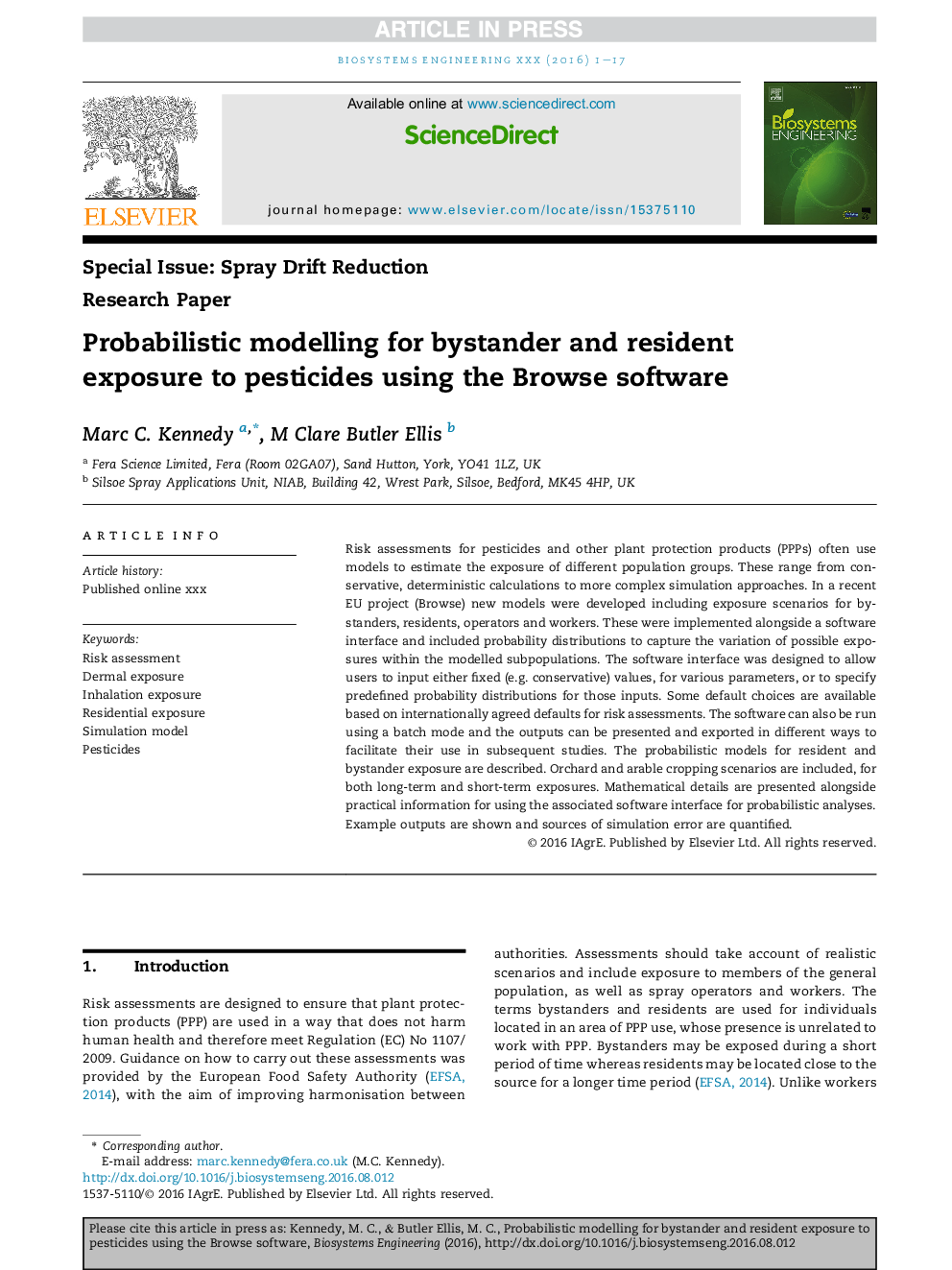| Article ID | Journal | Published Year | Pages | File Type |
|---|---|---|---|---|
| 5471854 | Biosystems Engineering | 2017 | 17 Pages |
Abstract
Risk assessments for pesticides and other plant protection products (PPPs) often use models to estimate the exposure of different population groups. These range from conservative, deterministic calculations to more complex simulation approaches. In a recent EU project (Browse) new models were developed including exposure scenarios for bystanders, residents, operators and workers. These were implemented alongside a software interface and included probability distributions to capture the variation of possible exposures within the modelled subpopulations. The software interface was designed to allow users to input either fixed (e.g. conservative) values, for various parameters, or to specify predefined probability distributions for those inputs. Some default choices are available based on internationally agreed defaults for risk assessments. The software can also be run using a batch mode and the outputs can be presented and exported in different ways to facilitate their use in subsequent studies. The probabilistic models for resident and bystander exposure are described. Orchard and arable cropping scenarios are included, for both long-term and short-term exposures. Mathematical details are presented alongside practical information for using the associated software interface for probabilistic analyses. Example outputs are shown and sources of simulation error are quantified.
Keywords
Related Topics
Physical Sciences and Engineering
Engineering
Control and Systems Engineering
Authors
Marc C. Kennedy, M Clare Butler Ellis,
